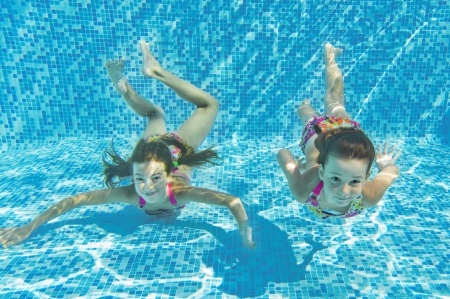

Drowning Accidents
Drowning is the fifth leading cause of unintentional injury deaths in the United States, according to a report by the Centers for Disease Control and Prevention. Each year almost 350 children under the age of five drown and 3,600 children end up in the emergency room after nearly drowning in residential swimming pools. Most swimming pool accidents involve drowning, near-fatal submersions, diving mishaps, and falls. The best way to prevent a drowning accident is to be aware of the signs of drowning.
Drowning Accidents Statistics
- Nine people drown in the United States every day.
- For every drowning death there are 1 to 4 nonfatal near-drowning accidents serious enough to require hospitalization.
- Drowning is the second highest cause of accidental injury-related death for children ages 1 to 14.
- Drowning is the leading cause of accidental injury-related death for children ages 1 to 4.
- Male children drown at twice the rate of female children in swimming pools although female children have twice the rate of drowning in bathtubs.
- Most drownings among children aged 1 to 4 occur in residential swimming pools.
- Drownings can be reduced by 50 to 90 percent with the implementation of a locked four-sided fence that isolates the pool from the house and yard.
- 11 percent of all pool drownings for children under age 5 occur in portable pools.
- 19 percent of child drowning fatalities happen in a public pool with certified lifeguards on duty.
- About 5,000 children 14 and under are admitted to the hospital each year due to accidental drowning-related incidents; 15 percent die and about 20 percent suffer from permanent neurological disability.
- Seventy-seven percent of children who suffer a home-drowning accident had only been missing for five minutes or less when found in the swimming pool and 70 percent weren’t expected to be in or near the pool at the time of the incident.
- In nearly 9 out of 10 child-drowning deaths, a parent or caregiver say they were watching the child.*
- When children learn to swim in formal swimming lessons, the risk of drowning can be reduced by 88 percent among children ages 1 to 4.
*Know the Signs of Drowning
- A drowning child often slips silently beneath the surface; there is often no cry for help, waving arms, wild splashing, or gasping for air.
- Once underwater, a person may not come back to the surface; you often won’t see any bobbing up and down.
- A drowning child can “disappear” underwater; a disturbed water surface, glare, and reflection can all cause submerged bodies to become invisible.
To ensure everyone’s safety, lifeguards should frequently leave the lifeguard stand to see the bottom of the pool. Close supervision by sober adults and life vests for children under the age of 4 are key to swimming safety in private pools.
Pool safety is a serious responsibility. Nonfatal drownings can result in brain damage that may result in long-term disabilities including memory problems, learning disabilities, and permanent loss of basic functioning. While lack of swimming ability is a leading cause of drowning, so is negligence by pool owners. Factors like the lack of pool fencing, the absence of close supervision, and the availability of alcohol are frequent causes of drownings.




